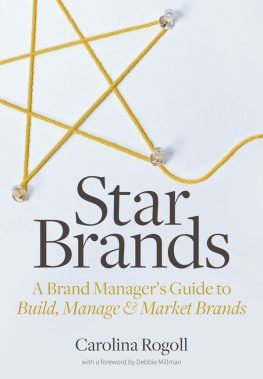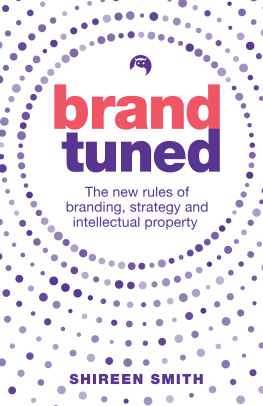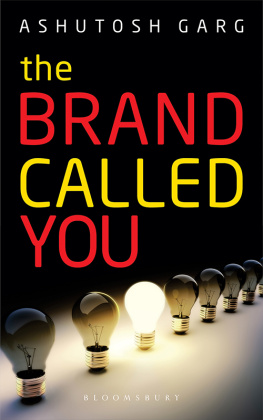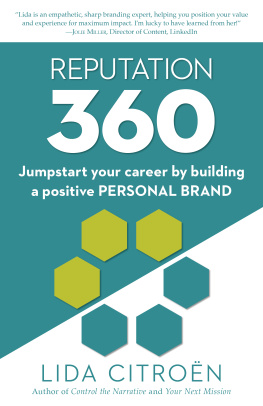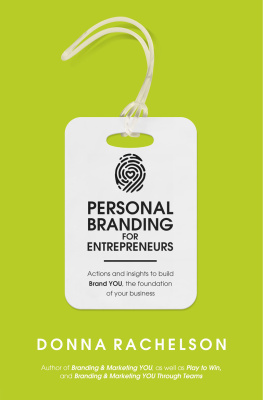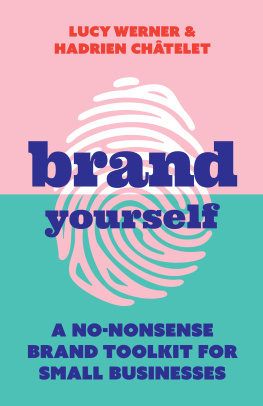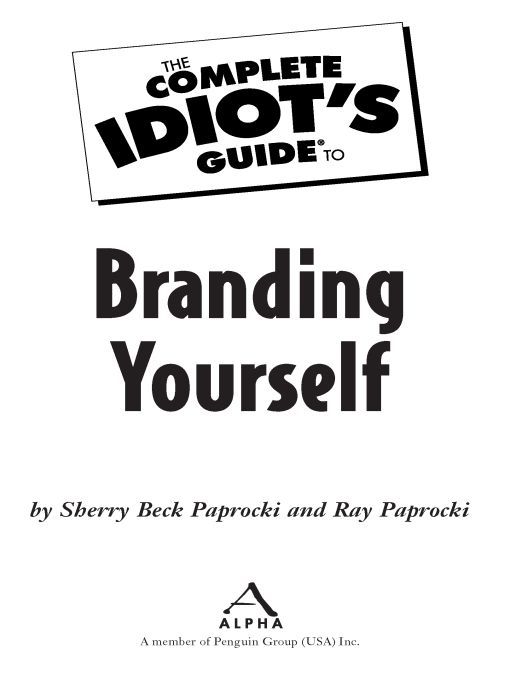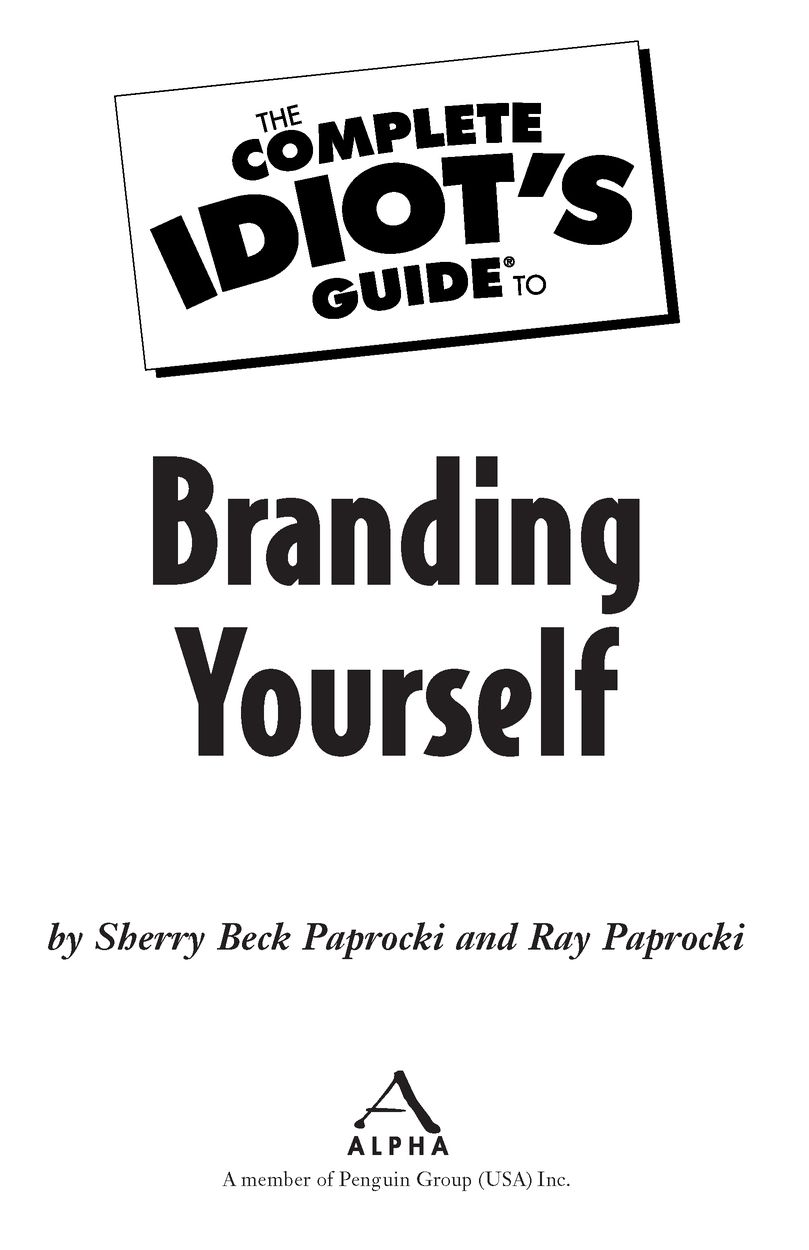Table of Contents
To Ana and Justin
Introduction
Do you have a personal brand? If not, you better get one.
Big companies, such as Coca-Cola and Starbucks, place great importance on creating and promoting their brands, and they know how to make billions of dollars by managing them. You can emulate their success on a smaller scale by developing your own brand as your most important asset.
Your brand is all about creating an emotional bond with a target audience. To create an authentic, effective brand, you need to be honest with yourself about who you are, the skills you have, and what you want to accomplish.
We know a guy with a big personal brand. Gordon Gee is the president of Ohio State University, one of the largest public universities in the country. He has a unique personal style, which involves his trademark bowtie.
The bowtie has gotten him a lot of media attention. But to say that Gordon Gees brand revolves around his sartorial choices is missing the point. The focus of his personal brand is his passion for higher education. He projects this passion through his charismatic personality and his ability to poke fun at himself. Of course, the bowtie doesnt hurt. And neither do his strong leadership and administrative skills. That full packageGees personal brandhas made him a highly respected and sought-after university president. And he earns more than a million dollars a year doing it.
So who needs a personal brand? Anyone who wants to have a successful professional life. In this era of high unemployment, nonstop global communication, and social networking websites, your personal brand is already being shaped, with or without your input.
The Complete Idiots Guide to Branding Yourself will help you develop your own brand to meet the challenges of this fast-paced, complicated, evolving world and help you stand out from your competition.
Developing a personal brand is valuable to anyone on the verge of a career transition: graduating college students searching for that elusive first job, mid-career professionals looking to change tracks, parents trying to reenter the workplace after raising a family, executives who have suddenly lost their jobs through layoffs and outsourcing, and retirees still wanting to capitalize on their skills.
Brands have the power to change peoples lives. They can shape the world. But personal branding is also about how we lead our lives, the contributions we make to our communities, and how we want to improve the places in which we live and work.
How to Use This Book
The Complete Idiots Guide to Branding Yourself is divided into four parts.
In Part 1, What Is Branding?, you will learn how to develop your own branding story based on your personal and professional goals. You will learn how to assess your brand and how to present your personal elevator pitch. An effective brand is only as good as your ability to communicate its message to others, and the final chapter in this part helps you stand out from the crowd by honing your communication skills.
Part 2,Launching Your Personal Brand, will help you take the brand you developed in Part 1 and begin projecting it into the world. You will learn how your resum, portfolio, headshot, and other marketing collateral reflects your brand identity. In addition, you will learn how to effectively and professionally communicate your personal brand via social networks, associations, and partnerships.
Part 3, Branding in a Modern World, teaches you how to harness the media monster to help promote your brand. You will learn about the various opportunities for promoting your brand through various media channels. These techniques include serving as a media resource for reporters; distributing effective public relations materials; communicating with the world via social networking sites, blogs, and podcasts; and advertising in traditional and new media.
In Part 4, Brand Extension and Evolution, you will learn you can extend your brand and when you should consider doing so. In addition, you will be introduced to several mega-brand personalities who have made huge successes of their personal brands.
With a big brand comes big responsibility. This part tackles the sticky issue of globalization by offering suggestions for managing a brand in an increasingly global economy. And the final chapter in this section turns toward the future: where does personal branding go from here?
Extras
We give you even more information in the following sidebars, which are scattered throughout the book.
Real World Brands
Read these boxes to find examples of people and companies that have established successful brands.
Warning
Keep your eye out for these red flags when developing and promoting your personal brand.
Tips
Here we offer additional advice on branding yourself.
definition
Look to these boxes for clear, concise explanations of branding terms.
Acknowledgments
Many people were involved in the making of this book.
We especially want to thank our editor, Michelle Wells, who had the concept for this project long before we walked into the picture.
While working on this book, we relied heavily on our children for advice. Justin Paprocki, a journalist for the Island Packet of Hilton Head, South Carolina, has been on the leading edge of Internet usage. His overall knowledge of todays communication techniques, from etiquette to history, was illuminating. And we also appreciated his tips for our chapter on resums.
Ana Paprocki, who graduates from Boston University in 2009, held our hand as we learned more about social networking and Web 2.0. Because of her wisdom and online skills, she has made sure that well never embarrass ourselves via the electronic world.
We need to thank our intern Alex Hurst, a senior at Denison University, who provided research, guidance, and proofreading expertise. More thanks go to our students at Otterbein College, who also gave us feedback regarding their own communication experiences as they built their young brands.
We appreciate the friends who contributed anecdotes and advice, as well as asking provocative questions. And to those who unknowingly made their way into the bookbased on various conversations, observations, and experiences through yearswe also extend our thanks.
It is impossible to name everyone who has contributed to our careers and served as mentors as weve built our own personal brands. Please know that we are grateful for your help.
Trademarks
All terms mentioned in this book that are known to be or are suspected of being trademarks or service marks have been appropriately capitalized. Alpha Books and Penguin Group (USA) Inc. cannot attest to the accuracy of this information. Use of a term in this book should not be regarded as affecting the validity of any trademark or service mark.


